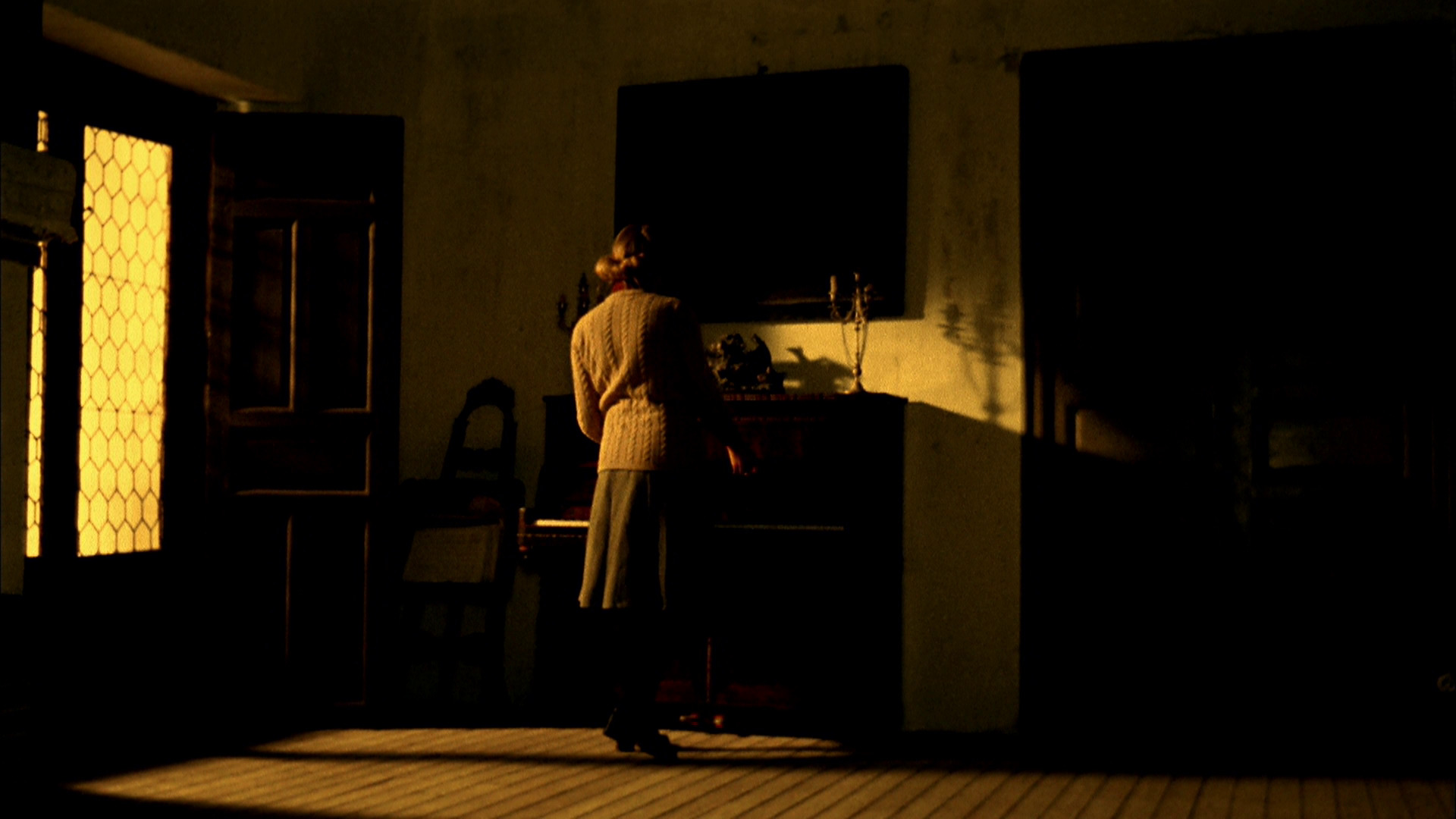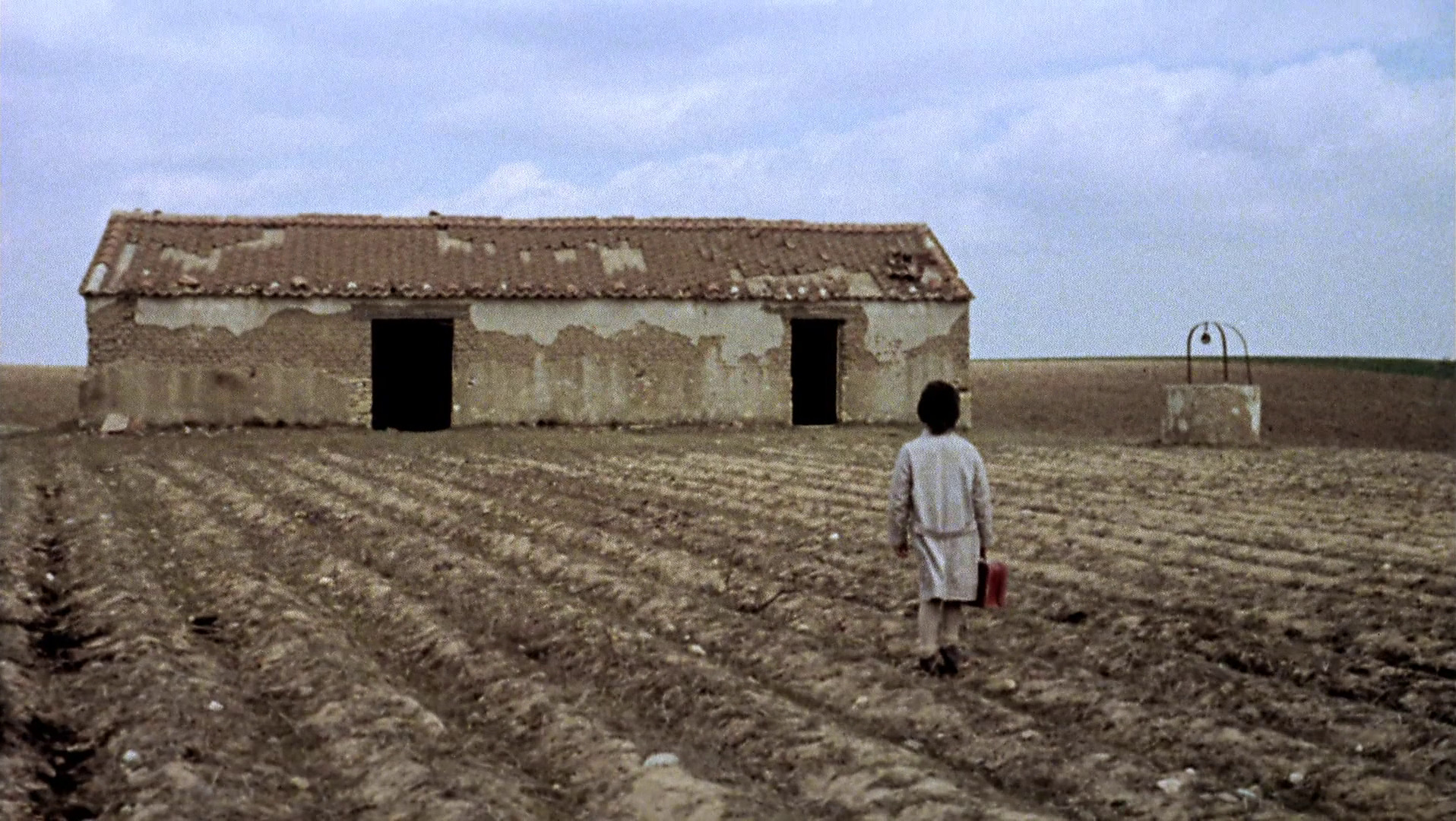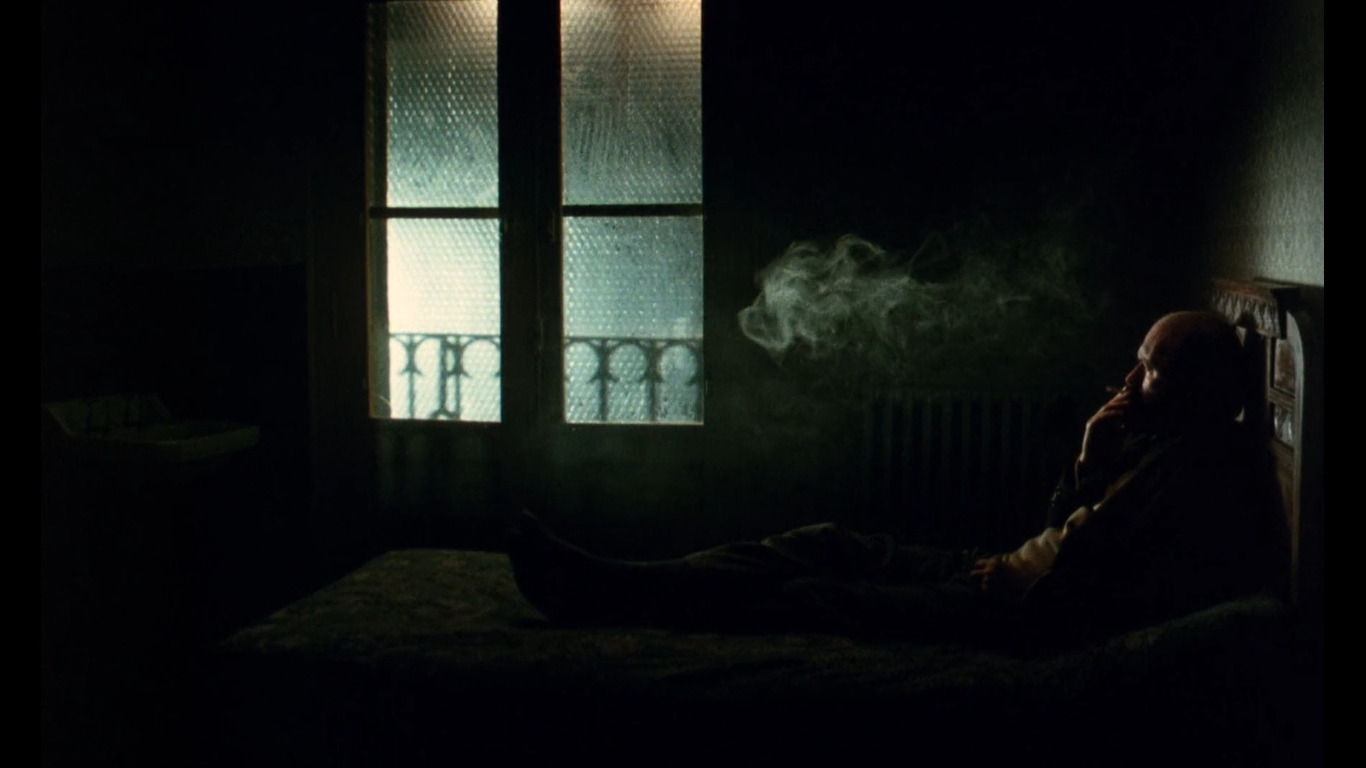Víctor Erice has so far directed only three features in 31 years. Since each has been widely considered an outstanding achievement, the logical assumption is that these films are very personal, preconceived projects, carefully prepared. His reputation is therefore that of someone so thoughtful and reflective that every film he directs requires a paistakingly protracted preparation. Very talented but tragically slow-paced, and very demanding, he's regarded as the typically "rare" filmmaker who will do precisely what he wishes, whatever he wants, regardless of potential audiences and commercial imperatives, and therefore, perhaps unluckily, always in difficulty to get financed to make his long-cherished pet projects.
This is in fact, mere appearance. True, these three films - El espíritu de la colmena (The Spirit of the Beehive, 1973), El Sur (The South, 1983) and El sol del membrillo (The Quince-Tree Sun aka Dream of Light, 1992) - are utterly personal and original works, but they all came out almost by accident, or were developed from a commission. However Erice made them his own, not one was at all a long-coveted project he finally did succeed in making. On the contrary, none of several other very beautiful Erice stories, often fully developed as detailed screenplays, have been made - so far; none of his actual films has been his first personal choice - at the start. Even his most autobiographical (albeit indirectly and partly), the short sketch Alumbramiento (Lifeline, 2001/2, included in The Trumpet, first of the two Ten Minutes Older feature-length multi-director instalments) was only his answer to a proposal: it had to deal with the passing of time and was to last only for 10 minutes, no more no less.
The Spirit of the Beehive was first planned as a standard cheap terror movie, not so different from those currently being made, in the late '60s and early '70, by other Spanish filmmakers such as Jesús ('Jess') Franco, León Klimowsky, Armando de Ossorio, or Jacinto Molina (aka Paul Naschy). Once it had been agreed with the producer that it would be based on the myth of Frankenstein's creature, the main reason it turned out quite a different, utterly non-genre film, was purely economic. The budget strictures did not allow to carry out the first idea, too expensive, thereby reducing the Frankenstein motif to a purely cinematic reference, and re-setting the action historically, thus personalizing it on the basis of Erice's own youthful reminiscences.
Erice's usual reluctance to put himself on the forefront or to speak directly to the audience or openly about himself drew him to change the point of view of a kid in the '40s from that of a boy to that a very young girl, thus creating the unforgettable character of Ana (played by total newcomer Ana Torrent).
Censorship had undoubtedly some indirect influence in making The Spirit of the Beehive a film where little is said or overtly stated, but rather suggested by implication, making its omissions significant or alluding to certain things thru the eloquence of visuals alone. Lightning, colour patterns and tonalities, framing, fragmentary bits of information, even props and set-dressing items are to be "read" in a very classical way, the same as one can deduce a lot of information about the true character of Ethan Edwards (John Wayne) and his whereabouts before his return to his brother's ranch at the very start of John Ford's The Searchers (1956) and infer from a couple of looks and unstressed gestures his past, frustrated love for his soon-to-be-dead sister-in-law...
That The Spirit of the Beehive was saluted in Spain and elsewhere as something unprecedented and new seems in retrospect some sort of misunderstanding. Frequently associated with the work of "art house", ascetic and rather "northern" filmmakers such as Carl Th. Dreyer, Robert Bresson or Ingmar Bergman, in fact El espíritu de la colmena seems to me more closely related to John Ford or the early work of Roberto Rossellini than to any other more openly "modernistic" (although it could be discussed whether The Searchers was not too modern for its time, since at its first release almost no one acknowledged its importance - which now, almost half a century afterwards, must seem quite astonishing).
Of course, Erice's first feature was something absolutely different from anything else in its home context, that of the Spanish cinema, and thus it has remained for more than 40 years, regardless of its surface influence on many other films, both immediately - as in another Elías Querejeta production, not casually also starring Ana Torrent, Carlos Saura's Cría cuervos... (Cría, 1975) - and many years afterwards - as Alas de Mariposa (Butterfly Wings, 199 ), despite Juanma Bajo Ulloa's unlikely boasting of never having seen The Spirit of the Beehive.
The main novelty of The Spirit of the Beehive being its very complex narrative structure, lifting from it the period, the girls' point-of-view, or some colour patterns is not enough to follow on its steps, a course which was only reluctantly taken by Erice himself in his next feature, ten years later, when Querejeta, out of three proposals, choose precisely El Sur and only allowed Erice to shoot what was roughly the first half of the complete storyline, stopping it just before the action moved to the South alluded to in the title, and therefore limiting to childhood and early adolescence what was intended to be mainly a film about initiation at all ages. Thus Erice's scope became restricted (very much against his will) to more or less the same age territory already explored in his previous film.
Also his third feature, and the first dealing with only-adult characters, was an instance of making the most out of external proposals. At first the idea was to produce a television-featurette series based on the encounter of several domestically known painters and as many Spanish filmmakers. Erice was tentatively coupled with the very reputed figurative painter Antonio López, an artist presenting obvious affinities with Erice, both deep-set and merely apparent: painstakingly careful about details and its precise reproduction on canvas, utterly realistic at first sight, and known to usually spend years to complete a painting (something Erice has actually never made, despite the long periods of time between each of his few films). But the personal meeting between López and Erice made them mutually discover deeper, more basic affinities. Erice began to shoot on videotape, and the idea went on to take quite another dimension, far exceeding the 50-minute length that a TV series chapter called or allowed for, and requiring also a longer time to shoot and edit than had been foreseen. As the nature of the film developed, it became an independent production, partly financed by López and his wife María Moreno, also a painter, who became the film's producer. As usually, once Erice made his own goal what had started at a prompting from outside, it grew in quite unusual ways and became something much more personal - even when the film was not really completed as in the case of El Sur, which in spite of appearances Erice considers still and unfinished film (which it is, of course, under close scrutiny, even if what there is left to be seen on the screen remains something fully satisfying: compelling, meaningful, moving and beautiful).
Even his latest, shortest work, Lifeline, which can be considered his most personal (because it tells almost his own birth, or rather, his first success at survival), his only autobiographical film (albeit implicitly), was also the result not of a previous design but rather his answer to a tentative assignment.
So, paradoxically, one might say that the most personal of Spanish filmmakers is not as "choosy" or "difficult" as he may seem, making only what he intends to and taking ten years to elaborate each film, however short in length it may be, but rather someone who has not so far been successful in finding finance for any of his truly personal and very exciting projects and who has spent most of his more than 30-year professional career writing and developing films he has not so far made, only very occasionally shooting three features and one short film that have become very personal as well, but which came by almost by chance.
Texto inédito, escrito para el British Film Institute (31 de mayo de 2004)




No hay comentarios:
Publicar un comentario